5G Mobile Wireless: A 5G Overview and Market Update
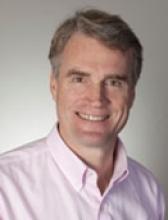
Mr. Roger Nichols
5G Program Manager
Keysight Technologies, Santa Rosa, CA
Thu, 11/21/2019
Abstract – The fifth generation of mobile wireless is now a commercial concept with many operators around the world selling 5G services and many more preparing to launch in the next 18 months. This talk will review the overall concept of 5G, the commercial, technical, and policy drivers, and many of the enabling technologies. We will also cover the state of the deployment and what to expect as this generation moves from its infancy closer to the mainstream.
Mr. Roger Nichols is the 5G Program Manager for Keysight Technologies His 35 years of experience in the wireless test & measurement industry spans various roles in Manufacturing and R&D and crosses the evolution from analog cellular radio through LTE and now 5G. He spent eight years as the Director of Marketing for Keysight’s Mobile Broadband Operation responsible for delivering the Wireless Test sets and systems used in all major design and certification labs as well as manufacturing facilities worldwide.
Applications of Chaotic Maps in Communication and Signal Processing
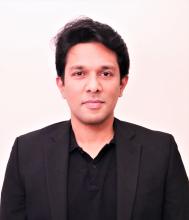
Dr. Anish Nair
Senior Engineer
Qualcomm, San Jose, CA
Thu, 11/07/2019
Abstract - The talk focusses on building/ renewing interests in chaotic maps to solve some of the critical problems in communication and signal processing. Chaotic maps can be considered as complex non-linear, initial condition dependent mathematical functions with very interesting features. The talk throws light on a subset of diverse applications from modeling atrial fibrillation from electrocardiogram (ECG) time series to lowering peak to average power ratio (PAPR) in orthogonal frequency domain multiplexing (OFDM) systems, using a known repository of chaotic functions. The underlying engineering challenge is, how can we leverage these properties to solve, model, analyze and predict future values of seemingly random behavior of highly dynamical systems using chaotic maps. Join to learn more.
Dr. Anish Nair is part of the R&D system group at Qualcomm Atheros, San Jose, California. He is currently involved in the development of next-generation coexistence solution for wireless technologies. Before joining Qualcomm Inc, Anish worked on the development of self-interference cancellation filter chip at GenXComm Inc, Austin, Texas. Dr. Anish received his Ph.D. and MS in Electrical Engineering from the University of Texas at Dallas, Texas.
Smart Environmental Monitoring Using Low-Cost Sensors and LPWAN
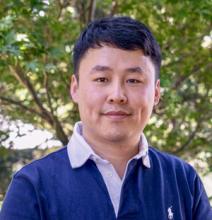
Dr. Nansong Wu
ES Department
Sonoma State University, Rohnert Park, CA
Thu, 10/17/2019
Abstract - Rapid convergence of traditional research areas of embedded systems, wireless sensor networks, control systems, automation, and sensors has enabled the evolution of Internet of Things (IoT). The concept of IoT is based on a selfconfiguring and adaptive system consisting of networks of sensors that interconnect in such a way as to make them intelligent and programmable. An important application of IoT is in environmental monitoring through distributed sensors and controllers that stream data for cloud storage and web access. Lakes from nationwide often lack water quality monitoring stations that can record data for public or private users. This research is to leverage the low-cost sensors for the design and development of a mobile water quality monitoring system (WQMS). We survey the available wireless technologies, select and deploy the LoRa (Long Range) network and evaluate its performance. We also present the detailed design and implementation of the mobile WQMS based on an unmanned surface vehicle (USV).
Dr. Nansong Wu received his M.S. in Electrical Engineering, Engineering Management, and Ph.D. in Electrical Engineering from Florida International University, Miami, FL. He has several years of academic experience. His areas of interest are wireless sensor networks, low-power wide-area networks, and FPGA design.
Machine Learning
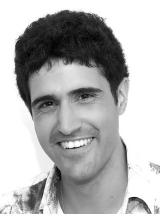
Dr. Shahrad Jamshidi
Data Scientist
Remi Pty, Australia
Thu, 10/03/2019
Abstract - Machine learning methods have allowed us to create many powerful and practical models from data to develop many new and life changing technologies. Understanding the underlying algorithms behind the methods provides insight into how the data is being used to learn patterns and achieve the specific goal. This talk will give a quick run through of some common methods used in data science and the assumptions that are behind each of them.
Dr. Shahrad Jamshidi is a data scientist and co-founder at the Australian startup, Remi AI. He works remotely in Santa Rosa, where he implements different machine learning algorithms on a wide range of consulting projects. He received his doctorate in Applied Mathematics at the Freie Universitaet Berlin, Germany and his Bachelor of Science at the University of Sydney, Australia. His collaborations with biologists and ecologists during his graduate research pushed him in the direction of data analysis and machine learning.
Nonreciprocal manipulation of electromagnetic waves
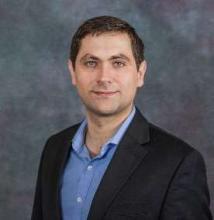
Dr. Sebastian Gomez-Diaz
Assistant Professor
ECE Department, UC Davis, Davis, CA
Thu, 09/19/2019
Abstract - This talk presents novel approaches to realize nonreciprocal microwave and photonic devices without reliance on magneto-optic effects. First, I will discuss the possibilities enabled by timemodulation to implement a wide variety of low-loss nonreciprocal microwave components exhibiting fascinating functionalities, including (i) phased-array antennas that independently control their transmission/reception radiation patterns at the same operation frequency; (ii) gradient metasurfaces able to arbitrarily manipulate beams propagating in freespace; and (iii) bandpass filters and planar antennas. Then, I will describe new exciting opportunities offered by graphene and 2D materials to break and tame time-reversal symmetry at terahertz and infrared frequencies. In particular, I will focus on the spatio-temporal modulation of graphene’s conductivity to realize plasmonic isolators and how drift-currents can be exploited to construct ultrathin metasurfaces supporting plasmons completely immune to backscattering. I will finalize by discussing challenges and opportunities in the nascent field of magnetless nonreciprocity.
Dr. Sebastian Gomez-Diaz is an Assistant Professor in the Electrical and Computer Engineering Department of UC Davis, CA. He received his Ph.D. degree in EE (with honors) from the Technical University of Cartagena (UPCT, Spain) in 2011. From October 2011 to March 2014 he was a postdoctoral fellow at the École Polytechnique Fédéral de Lausanne (EPFL, Switzerland). Then, from May 2014 to August 2016, he continued his postdoctoral work in the Metamaterials and Plasmonic Research Laboratory of the University of Texas at Austin, TX. He has received several recognitions, including the NSF CAREER Award in 2018 and the Leopold Felsen Award for Excellence in Electrodynamics in 2017. His main research interests include multidisciplinary areas of electromagnetic wave propagation and radiation, metamaterials and metasurfaces, plasmonics, 2D materials, non-linear and nonreciprocal phenomena, and other emerging topics on applied electromagnetics and nanotechnology.